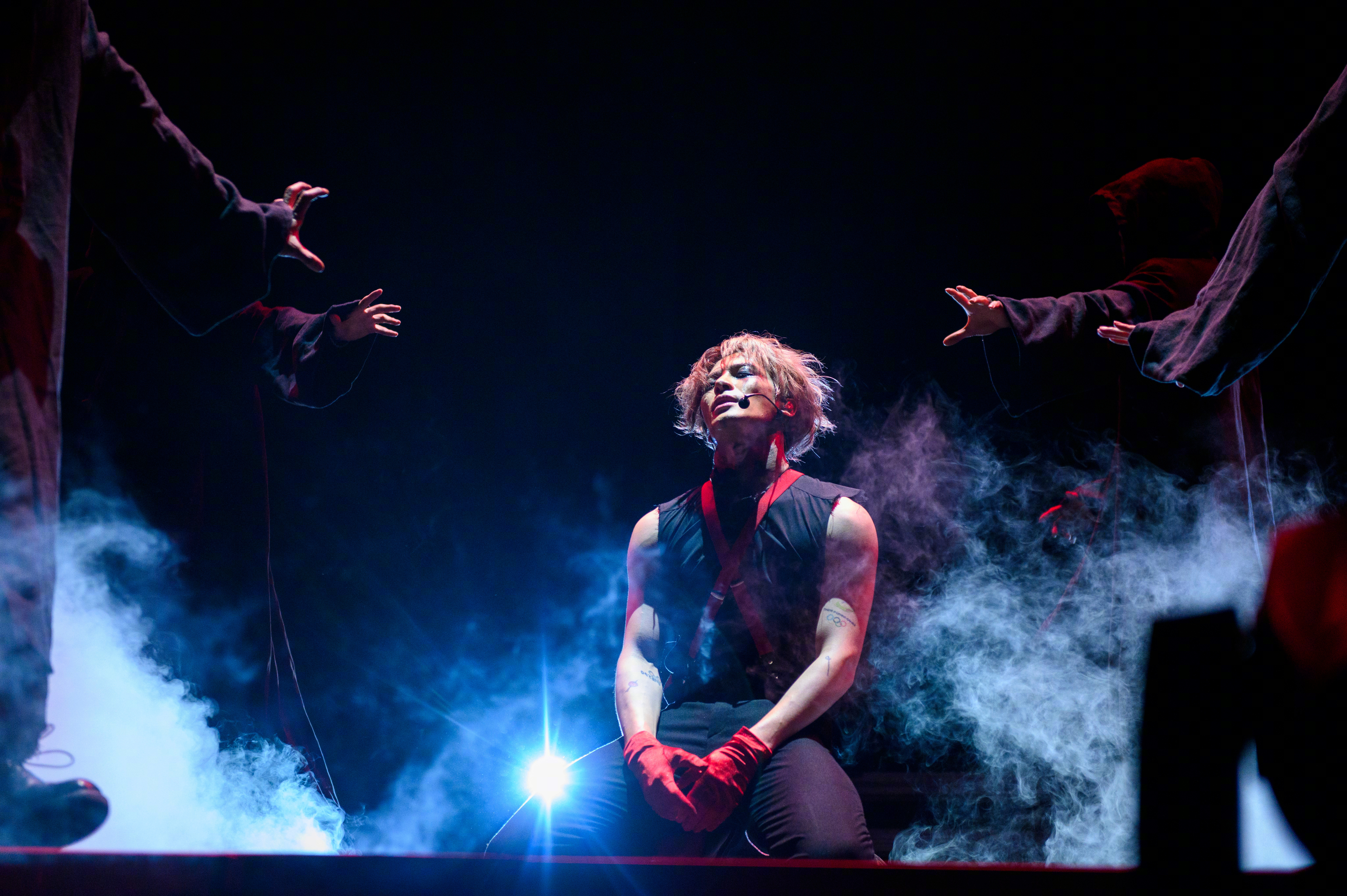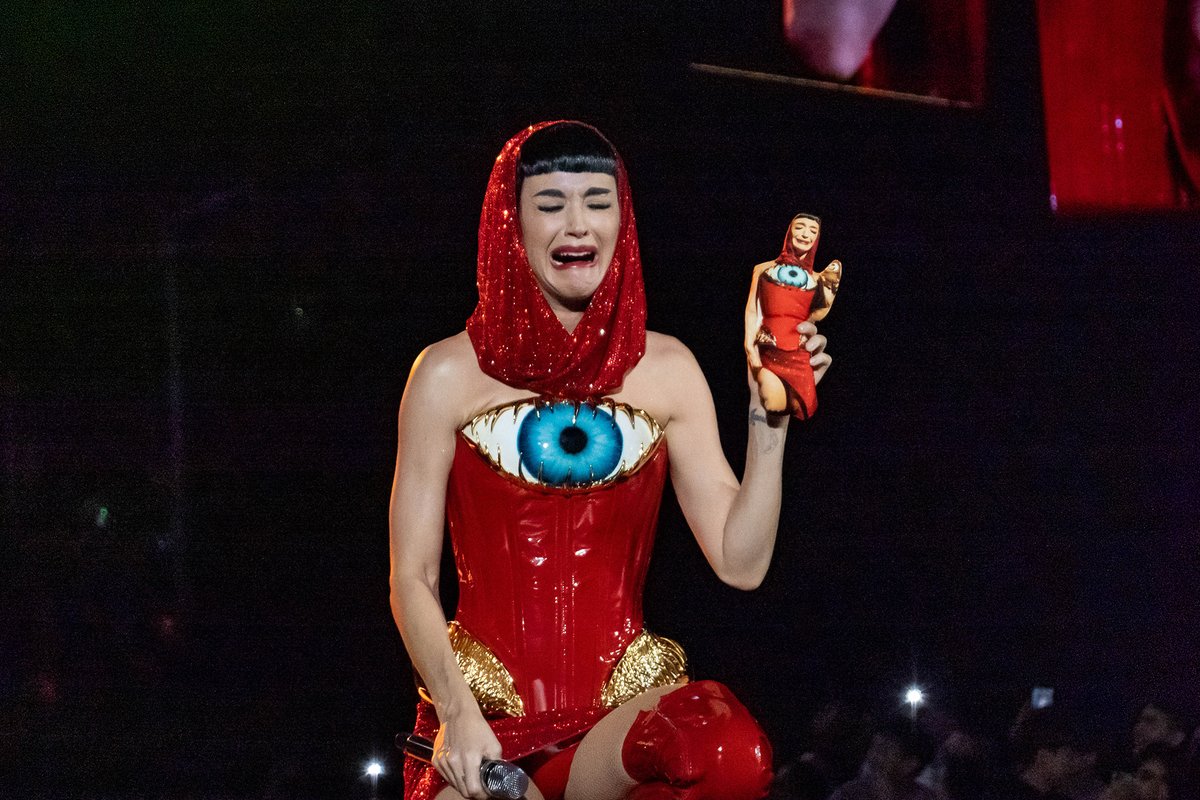China’s music streaming wars are heating up. Like most internet battles in China, they’re being duked out primarily by a handful of massive companies: Baidu, Alibaba, Tencent, NetEase, and their proxies. In March, TechNode reported on a possible copyright-sharing deal between Alibaba and NetEase that “may ease the competition to some extent” but “leaves little space for smaller players.” Tencent, which owns an estimated 75% of the music streaming market according to TechNode, recently announced a new online musical talent search specifically optimized to feed its numerous streaming platforms. As RADII’s Fan Shuhong reported:
Contestants submit their original compositions by May 17, in the process getting their music authorized by streaming services QQ Music, Kugou Music, and Kuwo music player. After users and professional judges vote, 20 finalists will be sponsored to record albums.
The winners will also be sent on tour, receiving advice and support from three professional coaches: singer Sitar Tan, singer/songwriter Tiger Hu, and LA-based record producer Justin Gray. After a final vote, the ultimate champion will get the chance to record a single produced by Gray, who has worked with Mariah Carey, John Legend, and Amy Winehouse.
 Tencent Eyes Entertainment Expansion with “Neo-Culture Creativity” StrategyArticle Apr 30, 2018
Tencent Eyes Entertainment Expansion with “Neo-Culture Creativity” StrategyArticle Apr 30, 2018
The streaming wars might be fought by titans, but there is also a team in this space that puts its focus on artists, diehard fans, and users who might want to learn about music made with a bit less superficial shine. For people like this, there’s Douban FM.
The app was launched by the music division of social network Douban in 2009, and currently clocks 100,000 daily active users. That’s a tiny number by comparison to some of China’s more populist-leaning streaming services — KuGou, which was absorbed by Tencent in July 2016, had a reported 450 million active users at the time — but Douban FM’s mission is to deliver something different to its core audience of curious, exploratory fans.
Douban Music recently spun off from Douban and merged with music licensing platform V.Fine, receiving an infusion of fresh capital and a mandate to stay focused on their underground niche. (The team also operates an offline label called D Force Records that leans more towards the experimental.) Their first product launch since the merger is the latest version of Douban FM, which allows users to navigate algorithmically-generated “maps” that its creators, eight musicians among them, hope will create a digital culture around music appreciation and discovery.

I talked with Zhao Yue, Douban Music’s Content and Operations Director (and a diehard music fan herself), about the new Douban FM and her division’s next moves.
RADII: When did Douban FM launch, and how has it changed over the years?
Zhao Yue: Douban FM was launched by Douban.com in 2009. It started off as a feature inside the Douban web page and later had an individual app made, and it has always been very popular. Douban FM met a difficult time starting from 2012-2013, when the copyright wars began and Douban, as an independent player, could no longer afford the expensive cost. So from 2014, Douban FM has been repositioning itself as a place for people to explore and discover music. We integrated our extensive album ratings and reviews data into FM, and recently launched a “map” for visualizing relations amongst musicians.

Douban FM’s new map feature
How does Douban FM differ from traditional radio or music streaming services?
We wanted a simple and elegant music player in an age when all portal sites look like Yellow Pages. And it was made just that way: when you visit Douban FM, it starts playing automatically, awaits your feedback and adjusts to your personal tastes very quickly. We are a Pandora-style service powered by algorithms, and have never had schedules or hosts or talk programs like traditional radio stations or podcasts. We offer users the opportunity to make their own playlists, or channels, and we organize some channels based on artists, genre, and mood. We have that in common with streaming services such as Spotify.
In general Douban Music is known for being a platform run by music fans, for music fans. How does this show in Douban FM? What is its relation to other Douban Music products?
Yes that’s right, only that we don’t just have music fans but musicians too. Our team is only about 20 people, but we have 8 active musicians (rock, experimental, electronic, classical) and 5 with music journalism experience, and of course all are music fans. Our programmers sometimes put on experimental music gigs on weekday evenings.
During the sketching up of this new version of Douban FM, we had a lot of near-philosophical discussions that wouldn’t have been possible without this background. For example, every track in the system needs to be defined by metadata — credits to the song writers, publisher info, genre and style, etc. But we know this info is often not sufficient for us to better understand the track. Does “genre” describe the music precisely, as more and more artists are trying to break boundaries? Does this info help the Chinese audience enough, as most of us don’t have as systematic an understanding of pop music as Western audiences? (Short answer: no.)
[pull_quote id=”1″]
Also, musicians have relations to other social influences, and to each other — how is that reflected in the metadata? Questions like those went on. We tried — and are still trying — to address them in our algorithm and product design, all in order to better represent the music and help people to discover, understand, and appreciate it better.
I think we have the advantage of understanding the needs and wants of both musicians and music fans, and probably more importantly, we respect them. We know what kind of help indie musicians usually want, and try to solve these problems with technology. At D Force Records we get more “field experience.” Not only do we have the chance to work with musicians we love, we are also actively gathering new experience, information, and solutions through putting out releases and organizing shows.
You recently launched a major new update of the product, Douban FM 5.0. What are the main changes in this new version?
The most important change is that we now offer a visual map, or a constellation of musicians. They are grouped into different regions based on how they are listened to by users, rather than on metadata only. You can also see how much of the entire map have you covered with your listening history. It shows up like a heat map: the more you liked or listened to a type of artist, the more the region lights up. You can also click on each musician’s name and see a complete profile, and see the artists closely related to that.
Another major change is that we are now directly connected to Apple Music — it works for Android systems as well, which will be launched soon. We are still honing the details, but Apple Music has strongly welcomed, and understands what we are trying to do. This would practically solve our copyright problem, and would be a win-win for us and Apple Music.
What are some of the most interesting features in the new Douban FM, that offer something different or more interactive to users than other platforms?
The new map would be the most outstanding feature, as most other music platforms all more or less provide customized, “personal” channels now. No other platform lets you see such a map of artists’ positions with relation to each other, though, and none and is a reflection of how a Chinese audience listens to them.

How does the map feature work?
This map is not of China — it is a virtual map generated by algorithm. The different “continents” and “countries” reflect differences among their listening groups. We used people’s actual listening habits as the core dimension in building this map, because we realized that traditional genre and style divisions are very much limited, and sometimes too artificial. And it depends too much on people having pre-existing musical knowledge — otherwise it wouldn’t be too helpful.
Imagine you’re a young kid in a third-tier Chinese city trying to explore electronic music on your own — you vaguely understand “EDM,” but what about IDM? Glitch? Footwork? It wouldn’t make sense to you. This discourse is only meaningful when one has already had an overview of the scene, and can distinguish the finer differences. It’s not helpful when you are venturing into an area you are unfamiliar with.
[pull_quote id=”2″]
But on our map, all musicians are reference points. The artists grouped closest to each other are very likely of the same genre or style, but that reflects the natural listening experience of previous users. For example, The xx and Grimes are very close geographically on our map. Do they sound similar? Perhaps not. But in a Chinese context, it most likely means that people who listen to these bands have a similar cultural profile: open to Western indie culture, probably artsy and introverted. Of course, in this respect, the algorithm does a much better job of categorizing things than a human. It can figure out deep, underlying trends and similarities that can’t be described by language.
On one side, this is helpful for music listeners to discover different music. Our next step is to gamify the product so that it’s more fun and rewarding for people to explore and enjoy music. On the other side, this feature is going to be helpful for musicians and labels to better understand their audience.
 Inside Douban’s Abilu Music AwardsArticle Mar 13, 2018
Inside Douban’s Abilu Music AwardsArticle Mar 13, 2018
Now that Douban Music has spun off from Douban, and merged with V.Fine, what is the future for Douban FM? Do you have plans for future improvements or upgrades?
We are happy to have the opportunity to work together with V.Fine. They are a very young and passionate team. Our new company now has the vision to be “the largest community for original music in China.”
On the musician side, we have both Douban Musician (to direct customers) and V.Fine, a music licensing platform (to businesses). In campaigning for music diversity, we have Douban FM, the Abilu Awards, Wetware Festival, and various live shows. For original content, other than our D Force Records label, we have Soy Sauce, V.Fine’s new EDM label, and have invested in Chinese EDM stars such as Panta.Q. The company is also developing copyright detection technology for business use. We have a pretty comprehensive layout.
For the second half of the year, we are going to release upgrades for Douban FM, smoothing out the bugs. But more importantly, we are going to launch a new version of Douban Musician with smarter functions to help musicians navigate the platforms and manage their releases.
—
Douban FM is available in the Apple App Store.
If you’re in China, keep an eye on Douban’s upcoming lineup of summer audio-visual shows for D Force artists Haiqing, 33EMYBY, Gooooose, ayrtbh (Wang Changcun), RMBIT, and Duck Fight Goose — full event details will be posted here.
You might also like:
 Social Network Douban Music Announces Major Merger, New Funding RoundArticle Apr 06, 2018
Social Network Douban Music Announces Major Merger, New Funding RoundArticle Apr 06, 2018
 Bugged Out: The Humanoid Machine Music of Shanghai Artists Han Han and 33EMYBWArticle Nov 22, 2017
Bugged Out: The Humanoid Machine Music of Shanghai Artists Han Han and 33EMYBWArticle Nov 22, 2017

















